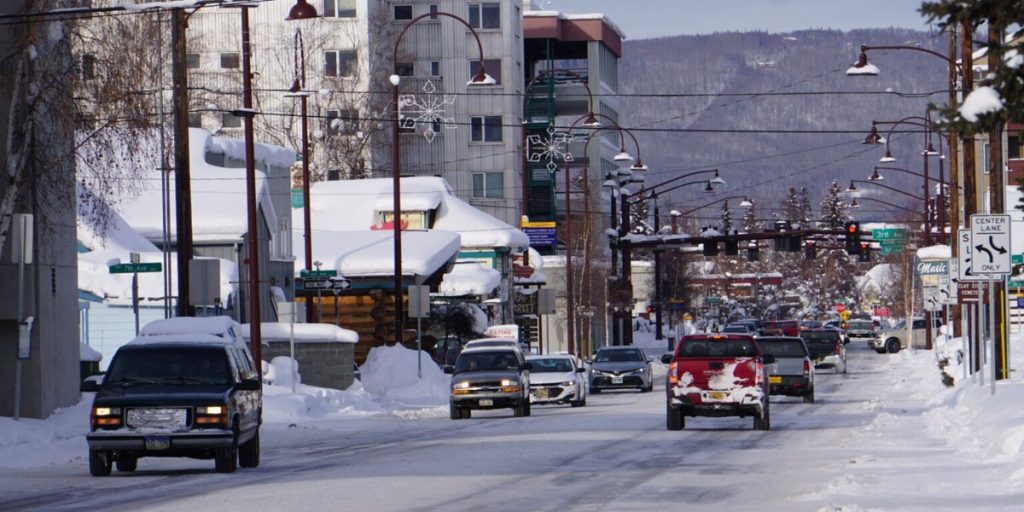Alaska, famous for its stunning scenery and rich wildlife, is frequently viewed as a place full of possibilities for those seeking adventure and a love for nature. Yet, there are some issues in the Last Frontier. Some towns in Alaska are experiencing a notable drop in population as people look for improved opportunities, more stable economies, and warmer weather.
In this piece, we examine five towns, uncovering the reasons for their population loss and offering insights into the factors at play in this trend.
Nome
Nome, a town steeped in history from the gold rush era, was once a vibrant center of activity. It drew in countless prospectors in search of wealth, resulting in a surge in population during the early 1900s. The end of the gold rush era led to a slow drop in its population.
According to the most recent census, Nome’s population stands at around 3,800 residents. This marks a notable drop from its highest point during the gold rush period.
The main factor contributing to the population decrease in Nome is the economic difficulties. The local economy, once dependent on mining, has faced challenges in finding new avenues for growth. Many residents have had to relocate to different areas of Alaska or the mainland United States due to a shortage of job opportunities.
The severe weather in Nome, marked by extended cold winters and brief summers, significantly contributes to the exodus of residents. Harsh weather conditions challenge residents, especially families, in sustaining a good quality of life.
Bethel
Bethel, located along the Kuskokwim River, has served as a vital center for the Yup’ik community for many years. In the 20th century, it developed into a hub for commerce and administration, though its isolated position has consistently presented difficulties.
Bethel has a current population of approximately 6,200, a decrease from earlier years. The town is experiencing a slow downturn as people look for improved prospects in other places.
The high cost of living is a key factor contributing to Bethel’s population decline. The town’s isolated position results in higher prices for goods and services because of transportation expenses. Residents are struggling to afford essential items.
The lack of quality healthcare and education services has played a role in the ongoing exodus. Many residents find themselves traveling far for proper medical care or education, leading to permanent relocations.
Read More: Hooked on Flavor: Top 10 Seafood Restaurants in Alaska for Savory Delights
Barrow
Utqiaġvik, formerly known as Barrow, holds the title of the northernmost town in the United States. This location has long served as a focal point for Inupiat Eskimo culture and a key site for Arctic research.
Utqiaġvik has around 4,400 residents, down from its highest numbers in the late 20th century. The town encounters distinct obstacles because of its far northern position.
Utqiaġvik faces harsh weather, with freezing temperatures dominating much of the year, creating tough living conditions. Harsh, frigid winters pose significant challenges for families, leading to a decrease in population.
The regional economy, heavily reliant on oil and gas exploration, has faced instability. Rising and falling oil prices, along with decreasing oil production, have resulted in job losses, causing numerous residents to look for more reliable job options in other locations.
Kotzebue

Kotzebue, situated on the Baldwin Peninsula, has served as a vital trading and transportation center for the indigenous Inupiat people for many years. The town expanded in the mid-20th century, yet it has encountered difficulties in more recent times.
Kotzebue has a population of approximately 3,100, indicating a decline. The town has seen a gradual decline in its population over the last ten years.
Kotzebue’s economy is facing significant challenges due to the decline in the fishing and hunting sectors, which are vital for the community’s survival. Residents are struggling to secure stable jobs due to limited economic variety.
The effects of climate change are notably felt in Kotzebue, disrupting traditional hunting and fishing activities. Residents are finding it increasingly difficult to maintain their lifestyles due to the shifting environment, prompting many to move elsewhere.
Wrangell
Wrangell, a historic town in Alaska, boasts a fascinating past that traces back to the era of Russian colonization. Originally a hub for fishing and logging, the town has faced challenges in keeping its population steady in recent years.
Must Read: The 8 Dumbest Laws in Alaska You Won’t Believe Even Exists
Wrangell’s population stands at approximately 2,500, showing a decrease from earlier years. The town is experiencing a consistent departure of residents, especially among the youth.
Wrangell’s population has notably decreased due to the downturn in the fishing and logging industries. The local economy relied heavily on these industries, and their decline has resulted in significant job losses.
In Wrangell, young individuals encounter challenges regarding access to higher education and job prospects. A significant number of residents opt to move away for educational and career opportunities in bigger cities, leading to a decrease in the town’s population.
Final Thoughts
Nome, Bethel, Utqiaġvik, Kotzebue, and Wrangell are facing notable decreases in their populations. Many factors contribute to this migration, such as economic difficulties, severe weather, rising living expenses, and a lack of access to healthcare and education.
The decrease in population in these towns underscores the wider issues confronting remote and rural areas in Alaska. This highlights the importance of sustainable economic growth, enhanced public services, and approaches to address the effects of climate change.